 We begin with the disturbing news that 'Scandia' - a small but respected Scandiwegian history journal - acquired an evil doppelgänger, without even a Van Dyke beard to distinguish it from the original. Though the pretender did have different editors, and contact details, and a vastly broadened interdisciplinary scope ('interdisciplinary' does not refer to "the interval of recovery time that separates two sessions of Loving Correction with Madame Whiplash").
We begin with the disturbing news that 'Scandia' - a small but respected Scandiwegian history journal - acquired an evil doppelgänger, without even a Van Dyke beard to distinguish it from the original. Though the pretender did have different editors, and contact details, and a vastly broadened interdisciplinary scope ('interdisciplinary' does not refer to "the interval of recovery time that separates two sessions of Loving Correction with Madame Whiplash").
Which is to say, the Journal Pirates are back! Brandishing cutlasses, pillaging and looting, or at the very least constructing spurious websites in the hope of trousering a few $K from gullibillies who don't stop to wonder why a previously free-to-publish journal has started charging its contributors.
 The phenomenon is just one niche within the vibrant exuberant ecosystem of predatory publishing, begat when the Author-Pays paradigm of open-access academic publishing fell in love with the career necessity of paper productivity. It deserves to be approached from multiple directions.
The phenomenon is just one niche within the vibrant exuberant ecosystem of predatory publishing, begat when the Author-Pays paradigm of open-access academic publishing fell in love with the career necessity of paper productivity. It deserves to be approached from multiple directions.
In a recent ArXiv preprint publication, Anna Abalkina (2021) thought through the implications of doppelgänger stolen-identity journals having precarious income streams, on account of their marginality. Faking a history in the industry is beneficial for any academic-publishing predator -- for anyone sufficiently gullible or venal to be a potential client would still rather publish in an established journal than contribute to the inaugural issue of an speculative venture -- but it becomes more pressing for doppelgängers. But from the marginality again, and the uncertainty of any return, it follows that doppelgängers will minimise effort (even more than one expects from parasites and predators).
 So one business model for journal piracy is to assume the identity of an ex-journal, taking advantage of its earlier issues. The default approach runs like this:
So one business model for journal piracy is to assume the identity of an ex-journal, taking advantage of its earlier issues. The default approach runs like this:
1. Choose a specialty scholarly website (or preferably no on-line presence at all, just printed editions), but with a web-verifiable reputation attesting to its non-fictitious nature. Journals with a non-Anglophone home country are especially desirable, as reducing the chance that its ex-proprietors will notice and complain.
2. Usurp its identity with an imposter website, often constructed on OJS,* though inviting submissions on a vastly-broadened purview of cross-disciplinary diversity: open to science, maths, agriculture, medicine, sociology, history and odes to small lumps of green putty found in one's armpit. Steal imagery from the real journal to make the replicant more convincing, as well as the back-issues and perhaps the editorial board, because who's to stop you?
 3. Disseminate that invitation in a spam deluge of biblical proportions. Mentioning the publication fee in the spam is optional... you may prefer to wait until the suckers have delivered the manuscripts into your grasp and committed themselves to publication.
3. Disseminate that invitation in a spam deluge of biblical proportions. Mentioning the publication fee in the spam is optional... you may prefer to wait until the suckers have delivered the manuscripts into your grasp and committed themselves to publication.
Phase 3 is where anyone with an '.ac' email address finds their in-trays overflowing with spam from Sylwan, Transylvanian Review, Jökull,... Which is what brought the whole grift earlier to the attentions of Jeffrey Beall, and now to D. H. Kaye. And before that, to Mehrad Jalalian, another go-to expert. Beall's site is no more, but anonymous helpful brownies maintain his minatory table of journal imposters.
We are now equipped to return to the case of Scandia. Its copycat website turns out to be the second. The first Suspender pretender (in 2016 or thereabouts) involved a threadbare unconvincing website; the thieves took no pride in their work, and did not even bother to assemble the supposed archives. Their hearts were not in it, and the spamming was too meagre to bring the imposture to wider attention, so it died from neglect rather than from hostile legal countermeasures.**
 Raising the
Raising the erotic tension to fever-pitch, we learn from DomainBigData that the (current) copycat website shares a Ukrainian IP server with Arctic Journal; and with 'Scienceborders.com'. The excitement never stops at Riddled!
The former was cloned from a Canadian journal a few years earlier. "Scienceborders" is an ill-thought-out venture in parasitical publishing, trying to create or fill a Portal-shaped gap between "predatory journal" and "library", and promising to accept manuscripts and money and make both disappear. $540, for instance, will suffice to have a 12-page manuscript edited, translated, formatted, approved and rendered inaccessible.
 Interested non-readers are offered a sample of 10 titles - purportedly a sample of a larger number of contributions that have been concealed completely - with an promise to provide access to each paper per se, in return for $100 each (or you could just go to the open-access predatory journals from which those titles were scraped).
Interested non-readers are offered a sample of 10 titles - purportedly a sample of a larger number of contributions that have been concealed completely - with an promise to provide access to each paper per se, in return for $100 each (or you could just go to the open-access predatory journals from which those titles were scraped).
please note that after you make the payment, the username and the password to access the article will be emailed to you within 2days (48 hours), because transactions are being monitored by our security department in case of fraud.
 It is difficult to imagine any academics who are desperate enough to fall for a grift that offers precisely nothing, but that didn't stop the 'Science Borders' instigators from setting up another six websites with the same package deal of nothing: Arena of Sciences (World's Pioneer Publishing Corporation); Knowledge Insights; Leading Publishers; Pioneer Scientists; Research Pioneers; Science Route Online. They have their own samples of inaccessibly published papers. All seven claimed to be operations of the Mellatron Limited Partnership (registered 24/10/14, company registration SL018524), which may or may not be related to Melatron Georgia Ltd. Each has its own samples of inaccessibly published papers, claiming to represent a much larger archive where not even the titles are knowable. Are you shocked or surprised to find that titles were filched from elsewhere, e.g. from the pirated Sylwan?
It is difficult to imagine any academics who are desperate enough to fall for a grift that offers precisely nothing, but that didn't stop the 'Science Borders' instigators from setting up another six websites with the same package deal of nothing: Arena of Sciences (World's Pioneer Publishing Corporation); Knowledge Insights; Leading Publishers; Pioneer Scientists; Research Pioneers; Science Route Online. They have their own samples of inaccessibly published papers. All seven claimed to be operations of the Mellatron Limited Partnership (registered 24/10/14, company registration SL018524), which may or may not be related to Melatron Georgia Ltd. Each has its own samples of inaccessibly published papers, claiming to represent a much larger archive where not even the titles are knowable. Are you shocked or surprised to find that titles were filched from elsewhere, e.g. from the pirated Sylwan?
Alert readers will have grasped the point that although some of these frauds and thefts have better-designed business models than others, the same people are running this cluster of inept portals - and also Sylwan, Jökull, Transylvanian Review, Arctic, Scandia, Informatica and umpteen others. They will also have noted an important corollary: once a paper has been pilfered for one set of Archives in the network, it is likely to be recycled in another improvised Back-Issue Archive, because the grifters can't afford to waste time. Journals in the network are also linked by frequent-flier predatory authors, publishing their polymathic productivity across multiple Interdisciplinary Journals.
 Abalkina (2021) applied a snowball method to these links and mapped out a network of 57 pirated journals. So rather than over-think things, and extend Abalkina's taxonomy of scam-sites, I will simply refer you there. Also to Jalalian & Dadkhah (2015) who have already overthought things in a lengthy inquiry into the exploits of the pirates (and their identities).
Abalkina (2021) applied a snowball method to these links and mapped out a network of 57 pirated journals. So rather than over-think things, and extend Abalkina's taxonomy of scam-sites, I will simply refer you there. Also to Jalalian & Dadkhah (2015) who have already overthought things in a lengthy inquiry into the exploits of the pirates (and their identities).
* * * * * * * * * * * *
I feel bad about leaving things there with no new material. So let's take another approach to the journal-piracy phenomenon, this time involving some scooby-doo sleuthing and the e-address 'scienceresearch1@yahoo.com'.
 According to Intertube records (thanks, DomainBigData!), this was used to reserve a series of domains and sites - in conjunction with a Hyderabad location and an Indian phone number, 91.7799886448. Most sites remain vacant lots, the exception being 'neurobiologyjournal.info', which houses the stub of an aspirational, otherwise-undeveloped "Journal of Current Neurobiology". It proves to be a trapdoor, dropping you (if you set foot on it) into currentneurobiology.org - a slightly more functional site, where we learn that its coverage includes phrenology as an active research topic. It seems that the developers were in two minds at the time about the name of their journal-to-be, for the stub contains an invitation to submit manuscripts to 'editor@cneurobiology.com'.
According to Intertube records (thanks, DomainBigData!), this was used to reserve a series of domains and sites - in conjunction with a Hyderabad location and an Indian phone number, 91.7799886448. Most sites remain vacant lots, the exception being 'neurobiologyjournal.info', which houses the stub of an aspirational, otherwise-undeveloped "Journal of Current Neurobiology". It proves to be a trapdoor, dropping you (if you set foot on it) into currentneurobiology.org - a slightly more functional site, where we learn that its coverage includes phrenology as an active research topic. It seems that the developers were in two minds at the time about the name of their journal-to-be, for the stub contains an invitation to submit manuscripts to 'editor@cneurobiology.com'.


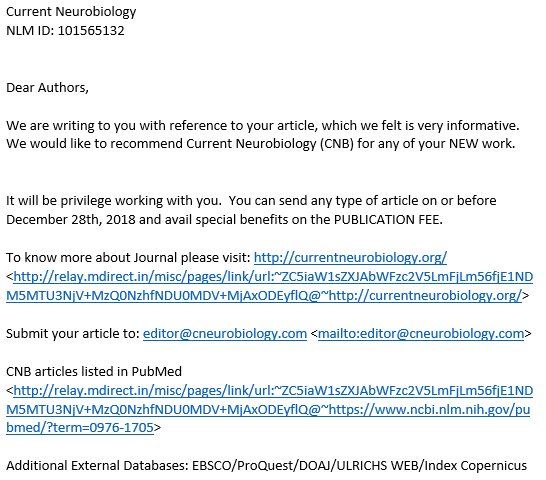 There is an allusion to an ex-journal here, 'Current Neurobiology' 1.0 (or an intended confusion with it): once a proudly Indian journal, with ambitions that included high standards, international contributors and a subscription model, before it went tits-up. Then some scoundrels skinned its disinterred corpse to use as the integument for a parasitical-journal fuckpuppet, even constructing a fake archive of back-issues to increase the plausibility of this pretender (using a mixture of authors' copies pilfered from ResearchGate, and 404 gaps). "Who could do such a dastardly thing?" ***
There is an allusion to an ex-journal here, 'Current Neurobiology' 1.0 (or an intended confusion with it): once a proudly Indian journal, with ambitions that included high standards, international contributors and a subscription model, before it went tits-up. Then some scoundrels skinned its disinterred corpse to use as the integument for a parasitical-journal fuckpuppet, even constructing a fake archive of back-issues to increase the plausibility of this pretender (using a mixture of authors' copies pilfered from ResearchGate, and 404 gaps). "Who could do such a dastardly thing?" ***
 To bring the suspense to a premature close... that number in Hyderabad is the phone of the OAfs: staff-turned-competitors from OMICS, operating as 'OAText' in an attempt to be even skeezier and greedier than their erstwhile employers. It links to 'ResearchWallet', the OAText payment money-laundry, where the name is a good insight into the proprietors' priorities. It further links to 'Journals Book', journalsbook@yahoo.com, another cut-out for not-obviously-OAText domain registration.
To bring the suspense to a premature close... that number in Hyderabad is the phone of the OAfs: staff-turned-competitors from OMICS, operating as 'OAText' in an attempt to be even skeezier and greedier than their erstwhile employers. It links to 'ResearchWallet', the OAText payment money-laundry, where the name is a good insight into the proprietors' priorities. It further links to 'Journals Book', journalsbook@yahoo.com, another cut-out for not-obviously-OAText domain registration.
We have not finished with defunct journals from moribund publishers! Necromancers reanimated the corpse of 'Mental Health in Family Medicine' from WONCA / Radcliffe and forced it to do their bidding, exhuming its archives and the corpses of the previous list of editors to serve as the Editorial Board in this new shadowy existence as a prostituted pukefunnel. The original went tits-up in 2013, leaving the publisher's own website as well as a version hosted at Ingenta, neither of which survived for long. Then there was a year's hiatus before the zombie version surfaced in 2015.
This journal-shaped garbage scow served as the spigot for a junk paper from a prolific author, as featured last year on Steamtraen.
It is not entirely clear which scammer is trading on the appearance of credibility lingering from MHFM 1.0, and its established history, to charge £1600 for each paper-shaped brainfart they accept. At one point the website for MHFM 2.0 occupied the same dedicated server as 'cneurobiology.com' - implying that it too was a scam from the OAfs. As for the 'Openaccessjournals.org' domain used by MHFT (and CNB) for mass-mail spamming, that redirected to OAText.com until recently.


 On the other hand, the 2015-2016 recensions of the MHFM 2.0 site branded it as the property of 'iMedPub', a holding company for the OMICS empire of academic fraud. I can only suppose that the shitweasels at OMICS were the original grave-robbers, and later they sold the zombified corpse to OAText.
On the other hand, the 2015-2016 recensions of the MHFM 2.0 site branded it as the property of 'iMedPub', a holding company for the OMICS empire of academic fraud. I can only suppose that the shitweasels at OMICS were the original grave-robbers, and later they sold the zombified corpse to OAText.
Certainly OMICS have experience in journal piracy. Many of its acquisitions are obvious, because of a preference for using "Scholarscentral.org" for online submission and money extraction - that being OMICS' centralised site for the purpose. The shameless identity-theft of "Genetic & Molecular Research" came up a few weeks ago.


Consider "Global Media Journal (American edition)". From 2002 to 2012, this was "hosted by the Center for Global Studies at Purdue University Calumet", as "the official publication of the Global Communication Association". It subsequently lost that official status, in exchange for a €1820 publication fee, and a virtual office address in London that's also used for the fraudsters' mockademic scamferences.


"...the OMICS generic edition, based in India, is NOT a part of the GMJ Network. It stands on its own and has nothing to do with the legitimate GMJ editions..."
To be scrupulously fair, rather than outright hijacking, GMJ's transfer into the clutches of OMICS seems to have been a legitimate though foolhardy transaction when the erstwhile director shifted institutions. He believed the promises that the new ownership would honour the intentions of his original vision. And great was the wailing and gnashing of teeth from suckers who thought they had contributed papers to the real GNJ.
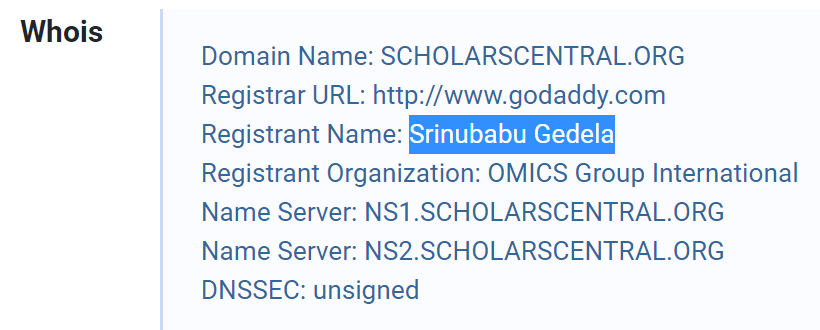 It would not come as a great surprise if the Indian federal gubblement poured money into supporting a new journal which eventually became another pimped-out fuckpuppet for the OMICS scampire, in a form of corporate welfare, reflecting the importance of academic fraud to the economy. Of course it isn't my problem, but I am curious about "Agricultural and Biological Research".
It would not come as a great surprise if the Indian federal gubblement poured money into supporting a new journal which eventually became another pimped-out fuckpuppet for the OMICS scampire, in a form of corporate welfare, reflecting the importance of academic fraud to the economy. Of course it isn't my problem, but I am curious about "Agricultural and Biological Research".
In 2019/2020 this previously subscription-based journal introduced €2000 publishing fees, while adopting Srinubabu Gedala's proprietary system for collecting them. Meanwhile the editors' contact details were bypassed with bogus e-addresses at http://peerjournal.org (the OMICS/iMedPub site for press-release self-congratulation), and website revisions dropped the acknowledgements for the financial support from India's Department of Science and Technology that had made the journal possible. Not necessarily piracy... it may just be that the founding editors decided to cash in by selling the package to Pulsus / OMICS, once no more departmental aid was forthcoming.
The point is made but I found a few more OMICS acquisitions so I might as well include them. The European Journal for Biomedical Informatics was founded with EU support. "Over its 15 years of existence, EJBI continuously received higher recognition and international acknowledgement". Then the founders decided it was time to entrust the legacy of their creation to professional publishers, but they chose OMICS instead.
People, Gedala's minions have no interest in the noble intellectual heritage that you strive to carry on; their concern is only for your extensive back-catalog and how they can use it to fraud more convincingly.
How it started

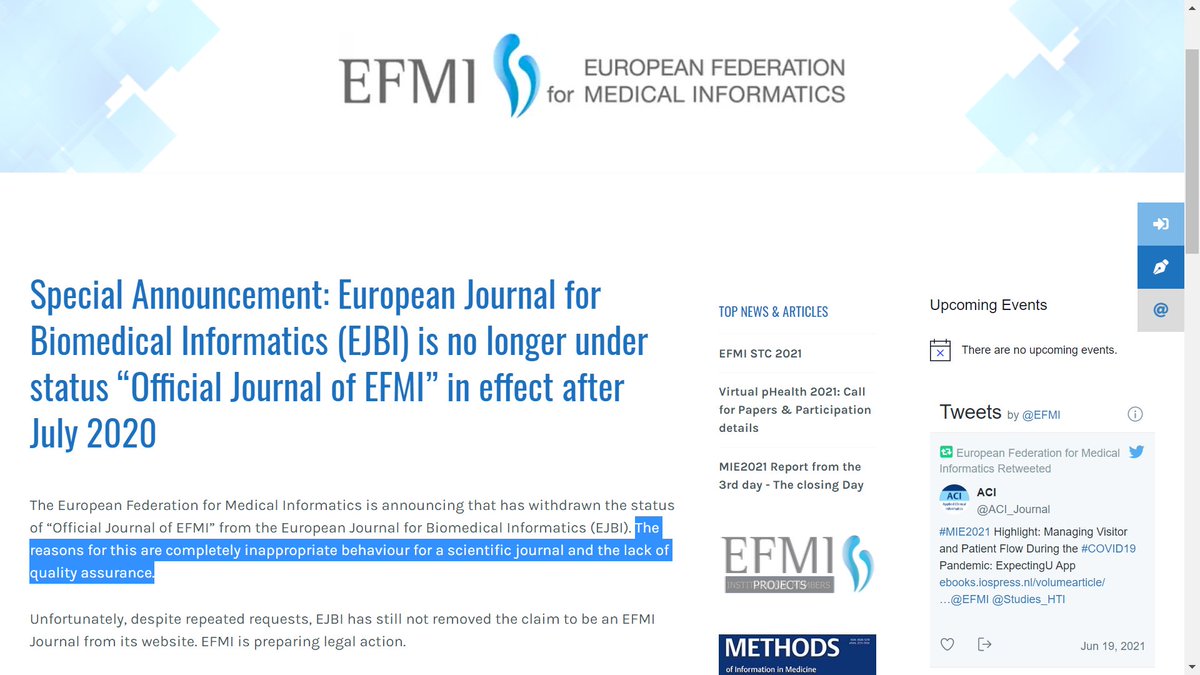
So far OMICS is winning in this competition for the greatest skeeziness and greed, now hijacking authors as well as journals.
Sorry this happened to you. FWIW, hijacking articles + identities + adding machine-generated text is a common tactic of OMICS. You are definitely not alone in experiencing this. Along w/ colleagues, I have an article chronicling these tactics which should be published soon.
— Kyle Siler (@KyleSiler) June 23, 2021
The text is nonsensical, and possibly computer generated. I suspect they may simply be trying to make the journal seem bigger than it is and give it credibility by lifting from groups who publish in certain areas 🤔
— Jamie Burr (@Dr_Burr) June 23, 2021
I can no longer bring myself to care how the Ukrainian Journal Of Ecology (originally the Biological Bulletin of Bogdan Chmelnitskiy Melitopol State Pedagogical University) fell into OMICS' clutches, with a "changed [...] editorial policy" (exclusively English-language, publication fees, an OMICS money-extraction website supplanting its old PKP/OJS framework). The submission system is Scholarscentral and the contact phone number is one used by Longdom (another OMICS polyp), but an attribution of Alex Matsyura Publishing as the source was enough to convince Web-of-Science / Clarivate that this jizzmop belongs in the Emerging Sources Citation Index.


* OJS is an Open Publishing software package, provided by generous people at PKP for anyone who wants to manage the workflow of small-scale journal publishing. I hope that sounds as if I know what I'm talking about. As a freebie, it is a boon to small Learned Societies who want to publish their newsletter or Scholarly Journal without entering the belly of the Elsevier / Springer beast. It is also a boon to parasitical publishers whose objection to paying part of their income from frauding to someone with an honest job (if programmers come under that rubric) is a position of philosophy or ideology.
Their reluctance to pay for software is rivalled only by their reluctance to pay for software support. Hence the spectacle of the Head Shitweasel from PeerTechz prairie-dogging at OJS community sites and wasting other people's time with blegs to help him fraud better (because the complexities of the software and the requirements of Reading HTML were too much for him).
** Old Suspender:
*** A question that was on the lips of my nephew and nieces, that time they looked in their father's freezer for something to cook and found a supermarket plain-pack meat-tray left there by persons unknown, labelled "Drainpipe Rabbit" and containing a frozen rat.


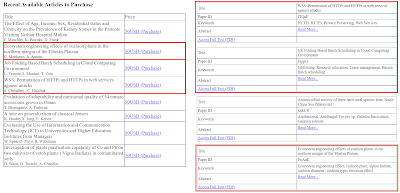


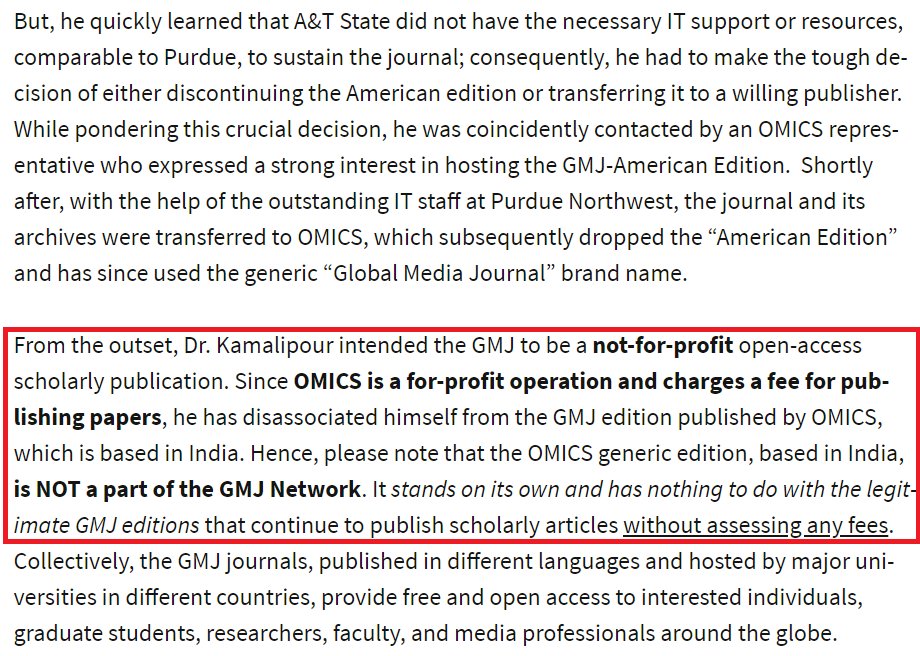




No comments:
Post a Comment